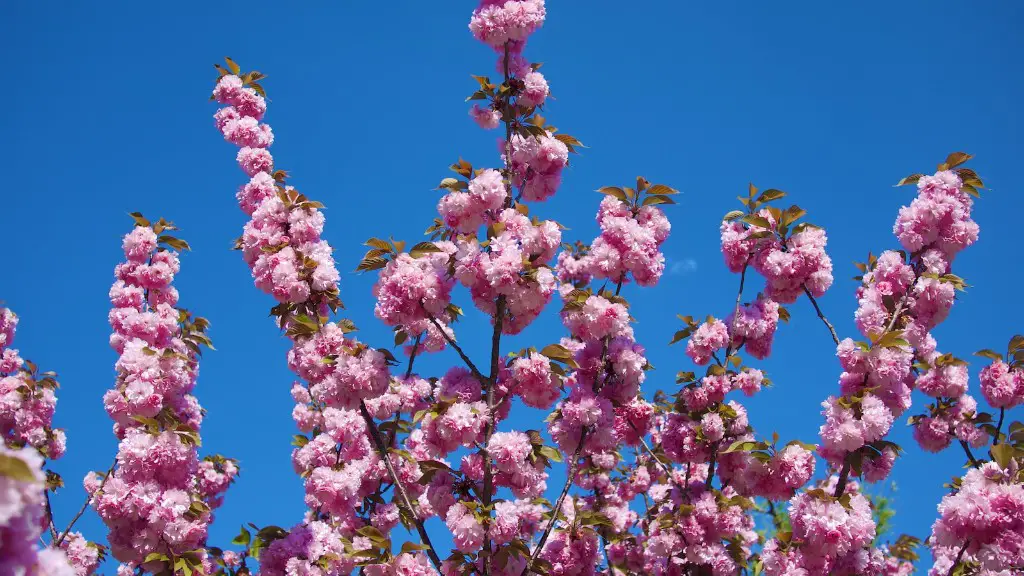Having a weeping cherry tree in your garden is a pleasant and calming experience, allowing you to observe nature’s beautiful transformation each season. Occasionally, however, leaves may curl or twist on the branches, leaving the tree looking less than healthy. So why are weeping cherry tree leaves curling?
Save Tree Save EnvironmentThe causes of curled-up leaves on a weeping cherry tree can range from disease, fungal infections, and insect infestations to nutritional deficiencies and even weather conditions. To properly care for the tree, it is important to understand the root of the issue so appropriate treatment can be determined.
Diseases & Fungal InfectionsOne of the dominant causes of curled-up weeping cherry leaves is fungal infection. Fungi grow rapidly under the right conditions, such as humid environments, and can quickly spread from one leaf to the entire tree if not caught in time. An example of a common fungus is powdery mildew, which can be distinguished by white powdery spots on the top of leaves, as well as discolored and/or curling foliage. If a fungal infection is thought to be the culprit for curled-up leaves, it is important to contact a professional pest or tree specialist to identify the situation and suggest proper treatment.
Insect InfestationsThe presence of pests on trees can also cause leaf rusting, discoloration, and curling. Common culprits include aphids, which tend to be active during spring and summer, as well as leafhoppers, which display a yellowish-green color and may cause curled, twisted, and discolored leaves.
Nutritional DeficienciesNutritional deficiencies may cause a tree’s leaves to curl, although this usually happens as a result of a lack of essential nutrients that are necessary for normal tree growth. Common deficiencies involve not enough nitrogen, potassium, or magnesium, as well as too much nitrogen, which may lead to an overabundance of foliage, stressing the tree. If a tree’s leaves are curling due to an imbalanced diet, a professional or a certified arborist can suggest how to supplement the tree’s nutrition.
Weather ConditionsSometimes, curling or yellowing leaves are caused by an inconsistent or irregular amount of precipitation. Severe storms, drought, and very cold or hot temperatures can also cause tree foliage to curl up.
Exposure to Chemicals
Exposure to chemicals can rub off on the leaves and cause them to twist and turn. Herbicides, pesticides, and fertilizers are common offenders and should be used in moderation to avoid harming trees.
It is important to remember that curled-up weeping cherry leaves are not necessarily a sign of a serious problem and may just be due to natural growth cycles. However, if the condition persists, it is important to identify the cause and start treatment as soon as possible to keep the tree healthy.
Different Pest Control Treatments
When it comes to pest control treatments, the most common approach is chemical treatments. Chemicals destroy the infesting bug, either by direct application to the pest or by interfering with the insect’s physiological processes. Chemical treatments tend to be highly effective, but they have their drawbacks as well – they are toxic, they can be costly, and they can also have a negative impact on the environment. For these reasons, many people are looking for alternatives to chemical treatments.
Biological control is another approach to pest control that is becoming increasingly popular. Biological pest control involves introducing beneficial organisms, such as predatory bugs, into an area to help control infesting pests. The benefit of this method is that it is safe, inexpensive, and does not involve the use of toxic chemicals.
Cultural control is another pest control method that is gaining in popularity. Cultural control involves preventing pest infestations by taking preventive measures, such as avoiding planting pest-attracting plants and removing conditions that are favorable for the development and reproduction of pests. For example, weeds can be removed to reduce the insects’ food sources or moisture can be removed from the garden to discourage fungal growth.
Mechanical Devices and Traps
Mechanical devices and traps are also used to control pests. Mechanical devices, such as nets, screens, and traps, can be used to physically remove pests from an area. Traps can use bait, such as food or pheromones, to attract pests, and then the pests can be collected and destroyed. This method can be effective and relatively inexpensive, although it can require a lot of time and effort.
Physical removal is another approach that can be used to control pests. This involves manually removing pests from an area or structure. This can be done using a vacuum cleaner, or even by hand. Although this is a viable option, it may not be effective in all situations, and it can be difficult to reach certain areas. It is also worth noting that physical removal does not always kill the pests, so re-infestation is still possible.
Integrated Pest Management Systems
Integrated pest management (IPM) systems are a critically important in maintaining a healthy environment. These systems seek to control a pest’s spread by combining several preventive and control methods. An IPM system may involve cultural, mechanical, and biological control measures, as well as the use of chemical treatments when needed. This approach is effective and can minimize the impacts of pests on the environment.
Whatever pest control method is chosen, it is important to have a basic understanding of its risks and limitations. Different control methods have their own set of benefits and drawbacks, and they should be weighed carefully before making a choice. Additionally, it is important to have a clear understanding of the scope and nature of the pest problem before deciding on a method of control.

